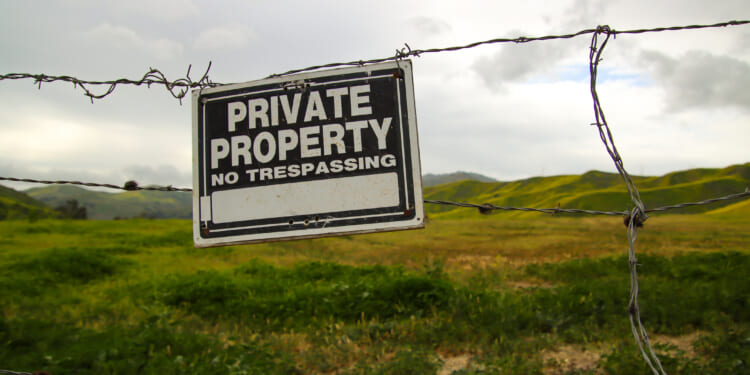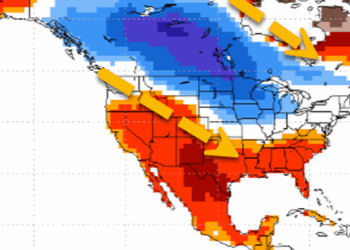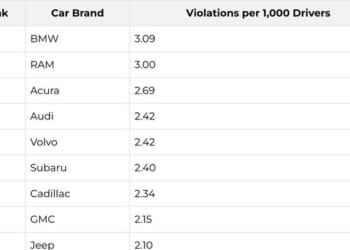John B. Finch, a 19th Century prohibition activist, originated the expression, “your right to swing your arm ends just where my nose begins.” Justice Oliver Wendell Holmes often used similar analogies to argue that personal freedoms do not extend to injuring the safety or property of others. Yet he also upheld limitations on property rights when their exercise would harm the community.
That legal dichotomy is at the heart of a long-simmering Colorado dispute, whether one has the right to float on streams that cross private property. It is the subject of “Public Resources on Private Property: Why the right to float is complicated and how Colorado addresses it,” a new report from the Common Sense Institute, which I co-authored with one of my successors as head of the Colorado Department of Natural Resources. I served in that role under Governor Bill Owens, and Mike King under Governors Bill Ritter and John Hickenlooper. We both faced this “right to float” issue, pitting outdoor recreation against private property rights.
It is controversial partly because Colorado treats the issue differently than many other states. In some, rivers and streambeds are considered public land, but in Colorado and several others, the waters belong to the people but streambeds belong to adjacent landowners. That was determined at the time statehood in 1876, when all the state’s rivers were considered too small to be commercially “navigable.” So, in Colorado the water is public, but not the land under it. Thus, wading, anchoring, and portaging around obstructions on private land may be trespassing.
Public access for floating is well established in Colorado, and today rafting, kayaking, and canoeing are multi-billion-dollar businesses, creating an uneasy balance between that right and the rights of private property owners that can only be addressed through a case-by-case mediated process, which was formalized in 2010. Every situation is different; no one-size-fits-all solution will work.
Boater-landowner conflicts are not especially frequent because there is so much public land in the state. The government owns more than a third of Colorado, more than two-thirds of the Western Slope. So, on hundreds of miles of the state’s most popular floating rivers, the adjacent
landowner is the public. As the report documents, that includes over 150 miles of the Colorado and South Platte Rivers, 175 miles of the White, 120 miles of the Gunnison, over 100 miles of the Yampa, 50-60 miles of both the Animas and San Juan, and many others.
Yet every few years, some boaters push for a legal right to float, wade, portage, and even to cross private land to get to streams. They have pushed legislation, ballot initiatives, and lawsuits, all unsuccessful in changing the rules. There are several good reasons for that.
First, Colorado’s Constitution includes a robust “takings” provision, requiring the state to compensate landowners for the value of any private land taken for public use. Making streambeds public land would trigger compensation that could be tens of billions. Rep. Kathleen Curry spent several years working on solutions, but the potential cost of reimbursing landowners ultimately doomed the effort. The same waters used by boaters also belong to legal water rights holders for food production, power generation, industry, and domestic water.
Second, Colorado’s water situation is unique, as its water is legally obligated to 90 million downstream people in 17 other states. That required development of a unique legal system, and the relationships between water and land are different as a result. The report explains that declaring all the water “navigable” could jeopardize a delicate balance of state v. federal control. That would upend more than a century of water and property law, as Attorney General Phil Weiser pointed out during a recent Supreme Court case.
Finally, Colorado voters recognize the uniqueness of their water situation, but also the value of outdoor recreation. They addressed that balance in ways other states can only dream about, dedicating proceeds of the state lottery to wildlife, parks, open space, and outdoor recreation, including public access. They have invested well over $2 billion in such improvements, especially through the Great Outdoors Colorado program. No other state does that.
The report identifies a major shortfall, though. However much public access exists, there is no readily accessible source of that information. The State should carefully document public access locations and publish user-friendly tools for people to learn where they’re welcome, and where to avoid problems.
That would make boating more fun and avoid any misunderstandings about where your rights end and someone else’s begin.
The report is available at: https://www.commonsenseinstituteus.org/colorado/research/energy-and-our-environment/public-resources-on-private-property-why-the-right-to-float-is-complicated-and-how-colorado-addresses-it

















